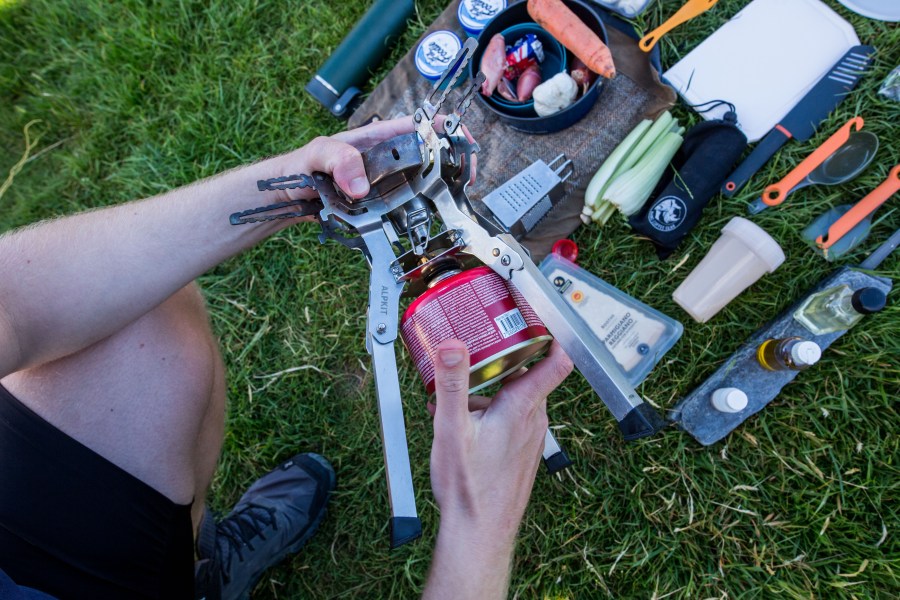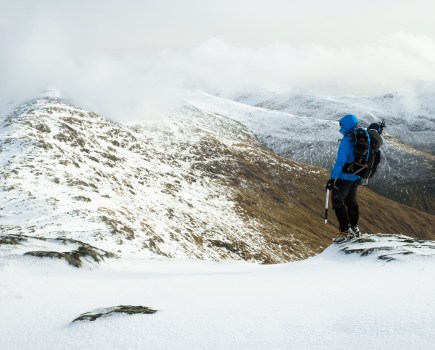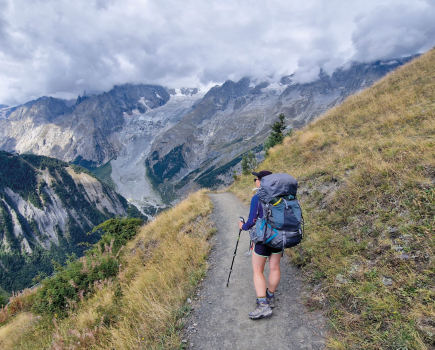For many, taking food on a hike can be a toss up between al fresco dining or dehydrated meals (see our guide to the best dehydrated backpacking meals). But the delights of a good meal in the outdoors do demand some logistics. Here, we’ll look at what kind of food you should take backpacking and how to pack food for camping to save yourself time and energy on the trails.
How to pack food for camping: Meal prep
Trail food doesn’t have to be an uninspiring and tasteless uphill struggle to consume calories. But, after a day of hillwalking, most of us would admit we are too tired to cook up a storm. Get the basics right at from the comfort of your home before hitting the hills and it’ll pay dividends. Here’s what you need to consider when doing your meal prep.
Calorie-to-weight ratio
If you’re heading out for a single night under the stars, you might not be thinking too much about weight-saving measures. Indeed, you may be looking forward to cooking up a nutritious and delicious culinary storm. We salute you.
For those of you embarking on multi-day backpacking trips, however, you’ll want your food to be as lightweight and calorific as possible. On most hillwalking days, you’ll likely need to consume between 2,500 to 4,500 calories, depending on the exertion and your body’s specific needs. You’ll hone this with experience but, if you’re just starting out, take plenty without overburdening yourself with too much extra weight. Likewise, any backpacker should take extra supplies of food in case of emergencies.
Budget
Dehydrated foods designed for backpackers are pricey but have a high calorie-to-weight ratio and are easy to pack and store. Alex Roddie has reviewed some of the best dehydrated backpacking meals to get your tastebuds tingling.
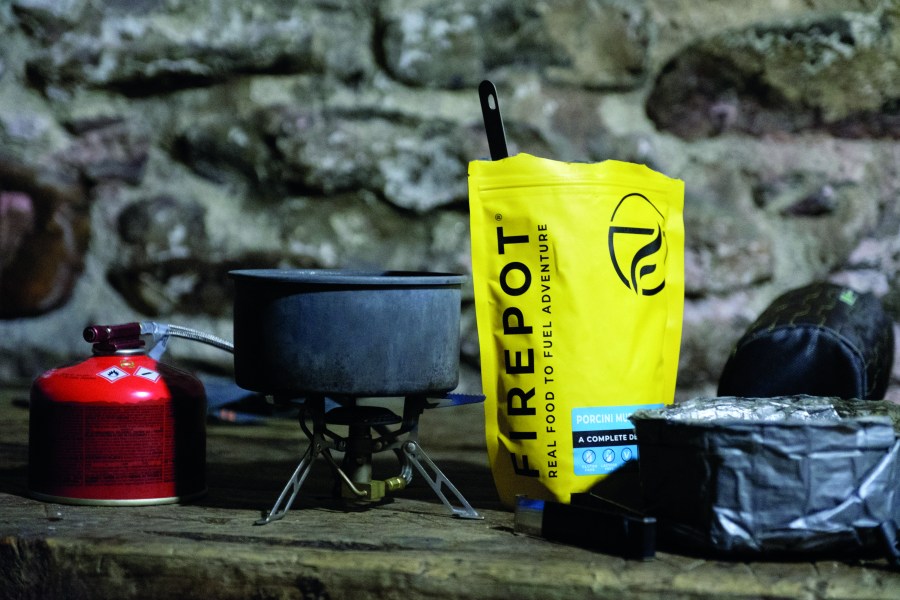
Cooking up a storm on a remote-canister gas stove.
Credit: Alex Roddie
Alternatively, you can learn to make your own trail mix and dehydrated meals or, for those on a budget, look to lightweight packaged meals to which you can simply add water such as pasta, instant mash and couscous. These are found in the dry food aisle of most supermarkets or groceries.
Cooking time
If you’re planning to spend a lot of time at camp, you might want to elevate your backpacking meals. Otherwise, you need to consider how much time (and energy) you’ll have to cook on your camp. Meals to which you can simply add water will get from pot to mouth in the shortest time.
Additionally, rather than pack lots of extra meals for days when you’re particularly in need of sustenance, it’s a good idea to bring lots of high-calorie, lightweight snacks that require no prep or cooking instead.
Variety and tastes
They say variety is the spice of life. That could not be more true than when you’re expending so much energy on simply getting through miles. Packing a little variety – while remaining within the realms of food you actually enjoy – will keep things fresh and keep you motivated to actually cook rather than plough through all your snacks on hard days, leaving your with couscous for breakfast come day three. We’ve all been there. Luckily, there’s plenty of variety and foods that cater to different dietary requirements on the market.
For snacks, think good quality, dry goods with minimal packaging that you’ll have to carry back out with you. Protein helps recovery, fat is an easy way to get calories in, and carbs are easy to digest on the move. You might want to consider taking multi-vitamins to help to balance electrolytes and sodium levels in the body and supplement those lost in the lack of fresh food. Saying that, fresh fruit on the trail is a real treat and an easy way to get sugars into your body – just ensure you carry any skins and peels out with you. Plas y Brenin instructor Iona Pawson has shared further detailed advise on how to eat well in the mountains.
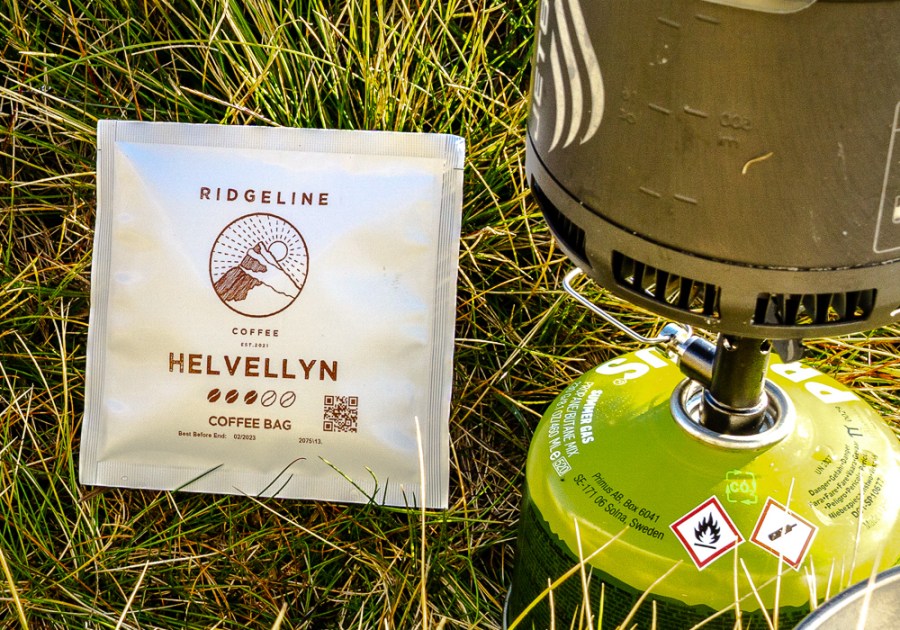
Chris Townsend recommended these Ridgeline Helvellyn coffee bags after testing outdoors. Credit: Chris Townsend
We’re focussing largely on food rather than hydration in this article, but it’s worth mentioning here that it’s a good idea to source some sachets of your favourite hot beverages – coffee, hot chocolate, tea. Name your poison. All can be found individually in supermarkets and grocery stores. Even taking one per night will keep your palette happy. They are a hug in a mug at the end of a long day. Besides hot beverages, you can learn more about how to stay hydrated with water and other soft drinks while backpacking from our expert, Jame Forrest.
How to pack food for camping: Before you go
Save space by repackaging
A lot of foods you buy in groceries or supermarkets come with extra packaging. To avoid carrying this back out with you, it’s a good idea to repackage your meals and snacks into reusable ziplock or drybags before heading out.
If you’ve done extensive food prep by meal and day, you can even label these so you’re reminded to ration your food as planned. You might want to include cooking instructions for longer trips, too.
Organise your food by meal types
In terms of organisation, how to pack food for camping is a matter of personal preference. It will depend on how you choose to fuel, how long you’ll be in the hills, and the kind of space and storage you have available to you.
You could choose to pack by meal type – so all your breakfast, lunch and dinner items are stored in independent sections – or perhaps you’d prefer to organise your stash by day, again avoiding the temptation of digging in to your day four treat meal too soon.
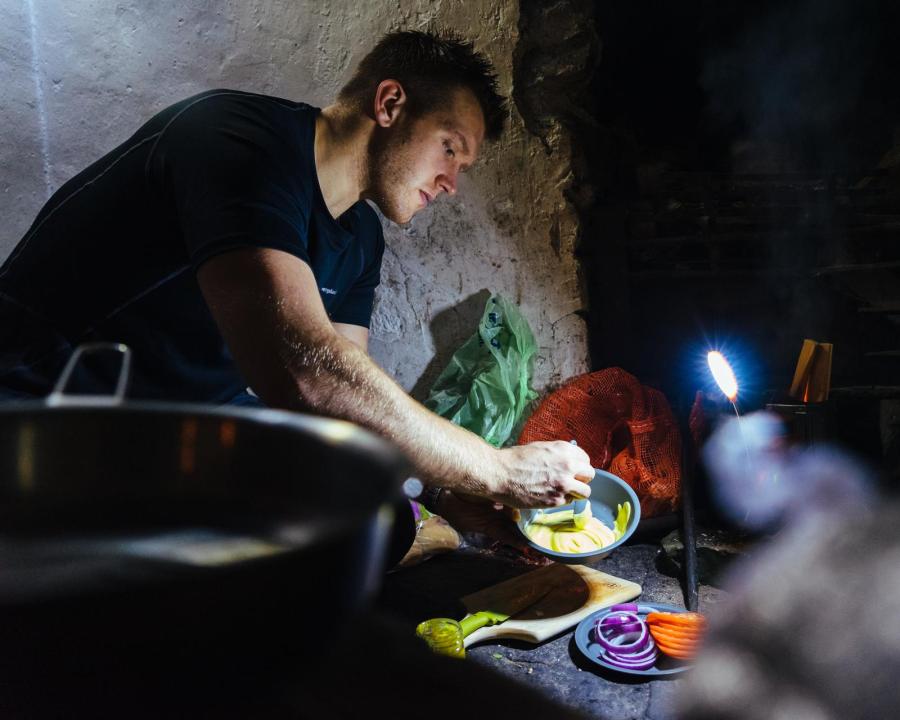
Harrison Ward cooking on the Biolite stove.
Credit: Daniel J Toal
Don’t forget the extras
Of course, there’s no use having an expertly organised meal plan and investing in the best nutrition for your body and tastes without the kit to cook anything. You’ll need a suitable camping stove system – you can learn about the different kinds of camping stove here – as well as fuel, a firesteel to light your stove (matches and a lighter are less reliable and even stoves with piezo igniters fail sometimes), a lightweight cooking and eating utensil of your choice, and potentially a pan and mug set if your stove doesn’t come with a pot.
How to pack food for camping: While you’re on the trails
Storage
Most good backpacking gear is designed to make your life easier on the trails. Take advantage of this. It’s a good idea to organise your backpack each morning before you leave the previous night’s camp spot. Again, do this with your own personal day’s schedule in mind. For example, if you’re planning a hot lunch, keep your stove more accessible than your sleeping system. If you won’t be using the stove again until you’re all pitched up for the night, pack this and your meal further down. Either way, ensure you keep all heavy items like your camping stove close to the back panel for optimum stability.
For most people, you’ll certainly be seeking the aid of snacks throughout the day. Try to pop all the day’s snacks in the hip belt pockets on your backpacking pack, at the top of the pack or another accessible spot such as the pack lid. Have a few emergency rations in other pockets or your trousers or waterproof.
Cooking in camp
Once you’re done cooking, ensure you allow your camping stove system to effectively cool down – probably overnight to be on the safe side – before repacking. If you’re anything like me, it’ll be out and waiting for the morning cup of coffee, anyway. Again, give the stove time to cool down before heading out in the morning.
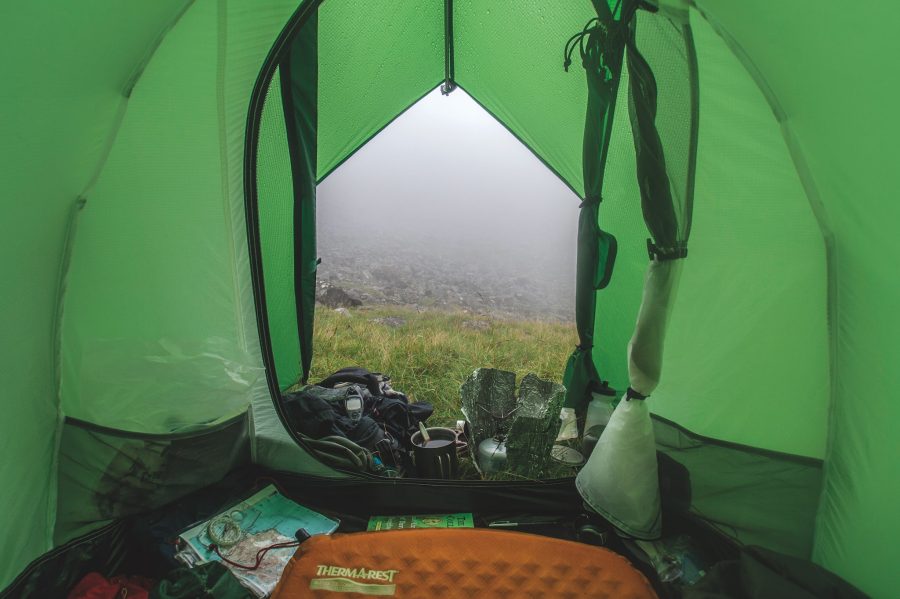
Wet gear and stove in the porch, door open for ventilation; only keep dry gear in the inner tent!
Credit: Chris Townsend
You can learn more about how to store and transport your camping stove as well as how to clean and maintain your stove from The Great Outdoors‘ experts.
Sharing is caring
It’s always wise to be aware of the local wildlife and whether they’re attracted by food as there are plenty of rodent species that might like a crumb or two – and are happy to chew through tents and rucksacks to get them. If you can, and the weather allows, avoid eating inside your tent.
Likewise, you should avoid leaving unwrapped or discarded food around your pitch. No doubt, you’ll be keeping your camp tidy anyway to both to follow the Leave No Trace principles of backpack camping and to avoid harming the ecology of an area. But if you’ve ever seen a mouse perched on your sleeping bag hood, you’ll want to keep things ship-shape for your own comfort, too.
Read more: Learn how to cook in camp with Alex Roddie.
Main image: The Fell Foodie’s wild cooking equipment. Credit: Jessie Leong.

